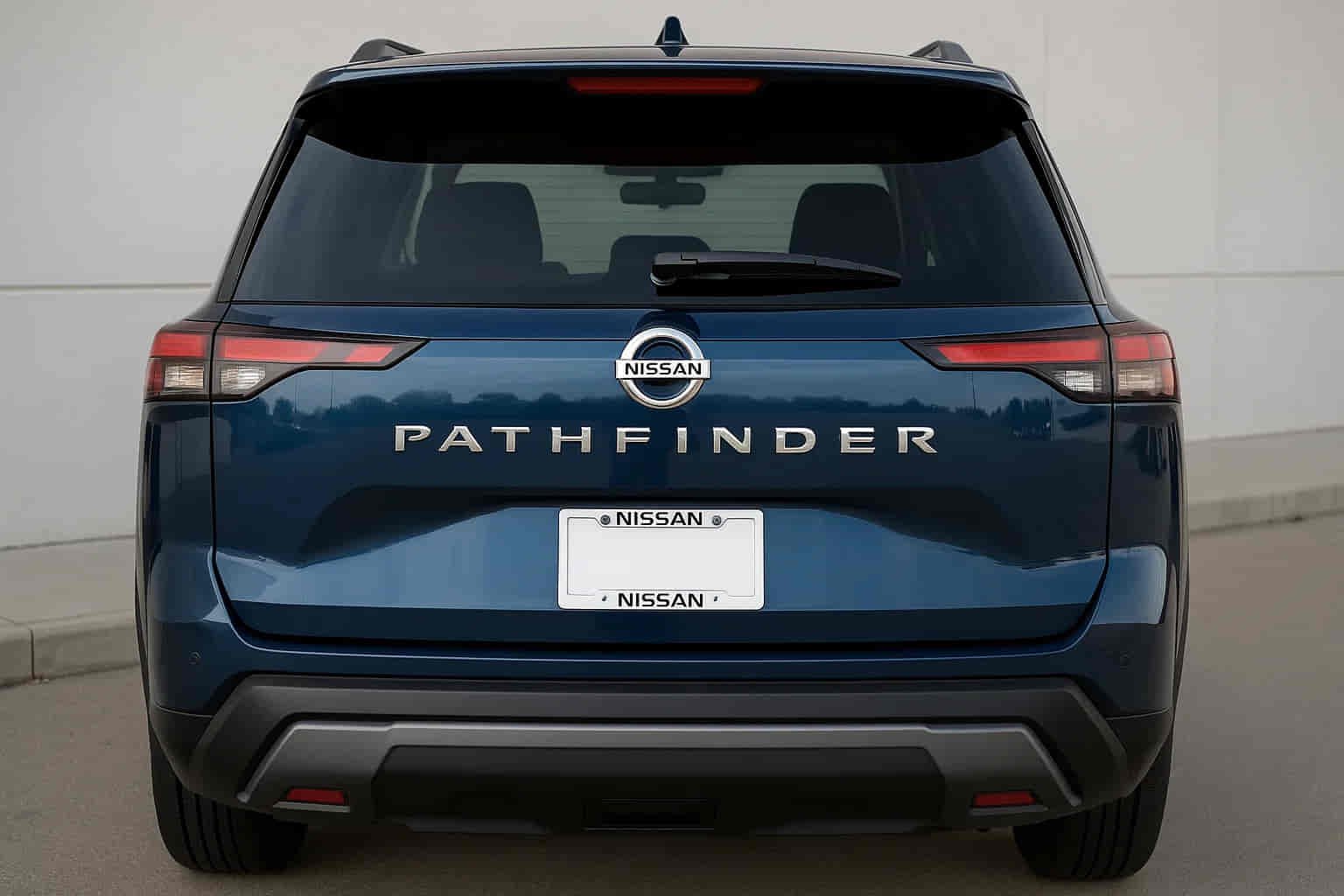If you drive a Nissan Pathfinder, you probably rely on the power liftgate more than you realize. It’s the feature that makes loading groceries, sports gear, or travel bags effortless with just the push of a button. But when the system malfunctions and a simple Nissan Pathfinder liftgate reset does not work, that convenience quickly turns into frustration. Owners of model years 2013 through 2025 have reported situations where the rear hatch refuses to respond, gets stuck halfway, or continuously beeps without completing its cycle.
The reason behind these errors is not always obvious. Sometimes it is as minor as a drained battery or a tripped fuse, while in other cases the problem involves the motor or the vehicle’s electronic control system. Instead of guessing, it helps to understand why the reset process fails and how to troubleshoot it correctly. In this guide, we will walk through the most common liftgate reset errors on the Nissan Pathfinder, explain practical ways to identify the cause, and share solutions that can save you a trip to the dealership. By the end, you’ll know when a quick reset is enough and when professional service is the smarter choice.
Common Reasons Why the Nissan Pathfinder Liftgate Reset Fails
One of the most frustrating experiences for Pathfinder owners is performing a reset on the liftgate only to find that nothing changes. The truth is that the reset itself is rarely the root of the problem; instead, it is a symptom of a deeper issue within the system. A weak or drained battery is often the first culprit. Since the power liftgate depends entirely on a steady flow of electricity, any drop in voltage can prevent the hatch from responding properly. Even after you attempt a Nissan Pathfinder liftgate reset, the lack of power means the mechanism cannot complete its cycle.
Another frequent cause is a blown fuse or damaged wiring. Over time, electrical components endure wear from vibrations, temperature shifts, and moisture. A single faulty connection can interrupt communication between the liftgate switch and the motor, making the reset procedure ineffective. In some cases, the problem lies in the liftgate motor itself. If it is worn out or beginning to fail, no amount of resetting will bring the hatch back to normal operation.
Owners should also be aware of sensor and software issues. The Pathfinder is equipped with safety sensors to prevent the liftgate from closing on objects or people. When these sensors misread the environment, they can block the hatch from functioning and override any reset attempt. Similarly, glitches in the vehicle’s electronic control unit may cause the system to ignore commands altogether. Recognizing these underlying causes is the first step toward troubleshooting effectively, rather than repeatedly pressing the reset button with no result.
How to Perform a Proper Nissan Pathfinder Liftgate Reset
When the rear hatch on your Pathfinder refuses to cooperate, the first instinct is often to keep pressing the button in frustration. But a correct Nissan Pathfinder liftgate reset follows a specific sequence, and skipping a step can make the process seem ineffective. To begin, ensure the vehicle is in park with the ignition turned on. The liftgate system needs the car’s electrical circuits active, but the engine itself does not have to be running.
Once power is stable, move to the rear of the vehicle and locate the liftgate switch. Press and hold the button until you hear the mechanism engage. This usually takes several seconds, and patience is key—releasing too early will cancel the reset attempt. After the system acknowledges the input, allow the liftgate to open fully, then close it completely to reestablish its memory settings. Some model years require repeating this cycle twice before the reset locks in place.
In situations where the battery has been disconnected or the power supply is unstable, a manual override may be necessary. Pathfinder models from 2013 through 2020 often include a hidden release inside the cargo area that lets you reset the hatch without electrical assistance. Later generations, especially post-2021, rely more heavily on electronic calibration, so it is important to follow the owner’s manual instructions closely. Regardless of the year, the principle is the same: a proper reset teaches the system the correct open and close positions, restoring the convenience that Pathfinder drivers expect from their power liftgate.
Troubleshooting When the Nissan Pathfinder Liftgate Reset Doesn’t Work
Sometimes, even after following every step correctly, the Nissan Pathfinder liftgate reset still fails to bring the hatch back to life. This can feel discouraging, but it also provides important clues about what is happening beneath the surface. If the liftgate does not respond at all—no movement, no sound—start by confirming that the vehicle’s battery is healthy and fully charged. A system starved of power cannot execute a reset, no matter how many times you attempt it.
If the hatch moves but then stops halfway, the issue may involve the liftgate motor or the struts that support the door. A weak motor can lose momentum under the weight of the tailgate, while worn struts create resistance that confuses the control module. In these cases, the reset procedure appears to “fail” because the hardware itself is preventing smooth operation. Another sign to watch for is unusual sounds during reset, such as grinding or clicking. These noises often point to mechanical wear, which cannot be corrected by software calibration alone.
Electronic errors present differently. A continuous beeping without movement usually signals that a sensor has been triggered. The safety system is designed to stop the hatch from closing on an obstacle, but when the sensor misreads its surroundings, it shuts everything down. If this happens repeatedly, a technician may need to recalibrate or replace the sensor. The key takeaway is that a failed reset is not the end of the process—it is a diagnostic tool. By observing how the liftgate behaves, you can narrow down whether the solution is as simple as charging a battery or as complex as replacing a motor.
When to Handle the Nissan Pathfinder Liftgate Reset Yourself and When to Visit a Dealer
For many Pathfinder owners, the first reaction to a malfunctioning hatch is to try fixing it on their own. In many cases, this makes perfect sense. A simple Nissan Pathfinder liftgate reset is a do-it-yourself procedure that requires no special tools. If the issue is caused by a weak battery that has just been recharged, or if a fuse has tripped, you can often restore normal function in a matter of minutes without ever leaving your driveway. Owners comfortable with basic car maintenance can also inspect visible wiring connections or lubricate hinges that may have stiffened over time.
However, there are limits to what can be safely managed at home. If the liftgate refuses to respond even after multiple reset attempts, or if you notice grinding sounds, electrical burning smells, or warning messages on the dashboard, the problem is likely more serious. These symptoms often point to a failing liftgate motor, faulty control module, or misaligned sensors—components that require diagnostic equipment and technical expertise. Continuing to force a reset in these situations can risk further damage or even compromise safety.
At a Nissan dealership or qualified repair shop, technicians can run electronic diagnostics to identify whether the fault lies in the motor, struts, or ECU software. While professional service involves additional cost, it provides peace of mind and ensures that warranty coverage remains valid. Knowing when to stop troubleshooting at home and when to hand the issue over to a professional saves both time and frustration. The golden rule is simple: if the reset works once, you’re safe to DIY; if it fails repeatedly, let the experts step in.
Maintenance Tips to Prevent Future Nissan Pathfinder Liftgate Reset Issues
While knowing how to perform a Nissan Pathfinder liftgate reset is useful, the best solution is to avoid repeated errors in the first place. Regular maintenance can significantly reduce the chances of the liftgate malfunctioning and extend the lifespan of its components. One of the simplest steps is to keep the hinges and struts clean and lightly lubricated. Dirt and corrosion build-up increase resistance, forcing the motor to work harder and triggering unnecessary errors that make resets more frequent.
It is equally important to monitor the vehicle’s electrical health. A weak battery is one of the leading causes of liftgate issues, so checking voltage levels during routine service can prevent frustrating failures. The same goes for fuses and wiring: inspecting them for wear, corrosion, or looseness helps ensure the power liftgate receives a stable current every time you press the button.
Another overlooked factor is how you use the cargo space. Overloading the rear or blocking the sensors with bulky luggage can confuse the safety system, which then prevents the hatch from closing correctly. By being mindful of what you place near the sensors, you can avoid unnecessary false alarms and failed resets.
Finally, take advantage of software updates when Nissan releases them. Modern Pathfinders rely on the ECU to coordinate liftgate operation, and a software patch can resolve glitches that no physical reset can fix. These updates are often applied during scheduled service visits at dealerships. In the long run, small preventive measures not only save you from repeated reset attempts but also keep your Pathfinder’s liftgate operating as smoothly as the day you first drove it home.
Conclusion
The power liftgate is one of those features that often goes unnoticed until the moment it stops working. For Nissan Pathfinder owners, understanding how the system operates and why a liftgate reset sometimes fails can make the difference between a quick fix at home and a stressful, costly repair. Across model years 2013 through 2025, the fundamentals remain the same: the hatch relies on healthy power supply, properly aligned sensors, and a motor that can manage the door’s weight without resistance. When one of these elements falters, the reset process becomes less of a cure and more of a diagnostic signal.
By taking the time to troubleshoot intelligently—observing how the hatch responds, listening for unusual sounds, and checking the basics—you empower yourself to solve smaller problems without delay. At the same time, knowing when to stop and let a professional technician step in ensures that larger issues do not spiral into more serious damage. With routine maintenance, from lubricating hinges to keeping the battery strong, you reduce the chances of reset errors altogether.
If your Pathfinder’s liftgate has ever left you stranded with a trunk full of cargo, you are not alone. Share your experience in the comments below—your insights may help another driver restore their liftgate faster and with far less frustration.

